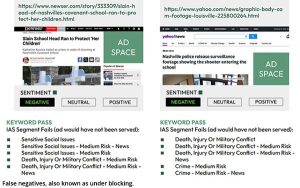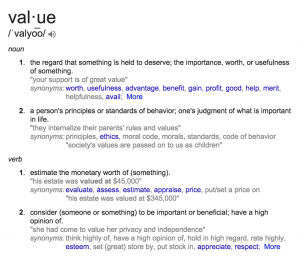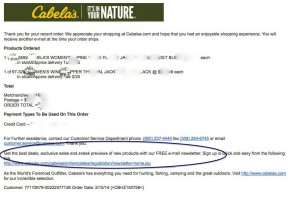— February 13, 2018
“Oh my god”, she said, on the escalator out of the HR conference. “You do employer brands? We totally need an employer brand. I think. I don’t know. Maybe we need an employee value proposition. What the f*** is that anyway? Can you come in tomorrow? I like your purse.”
I will grant you that she had a bit too much convention centre coffee in her system to be making sense on any subject, but my new friend, who is the organizational development director in a mid-sized engineering company is pretty typical of the HR people I have been talking to lately.
They understand that an employer brand (which I prefer to call an internal brand) is important for morale, competitive recruiting and  hanging on to good people, and they understand that they have no idea how to make one.
hanging on to good people, and they understand that they have no idea how to make one.
The good news is, unless you are a brand new company with literally no employees, you don’t have to make an internal brand; you already have one. It’s the gooey sum of your culture, leadership, opportunity, work environment and meaningfulness. Since you already have an internal brand, all you need to know is which of three categories it falls into:
- It sucks
- It could be better
- It’s fantastic
Here is where it starts to get complicated. Understanding whether or not you have a good internal brand requires a fair bit of data, and a bunch of running around to get it. Let’s start with a definition of what your internal/employer brand actually is: It’s how your current, past and prospective employees think of your company as a place to work. Since it’s based, in part, on perception, as opposed to reality, there’s a fair bit of management that will have to go into its care and feeding.
Most accidents happen at intersections
What’s important to keep in mind is how these perceptions are formed. Just as with your external brand, the perception of your internal brand is formed at the intersection of expectation and experience. Write that down: it’s the key to everything. Forty percent of all car accidents happen at intersections, and half of all serious car accidents happen at intersections. If we consider the journeys your candidates, employees, contractors, interns and retirees have with your organization as a series of intersections, we can begin to see how great internal brands live and die by what happens at these inflection points (also what happens in between, but I’m getting ahead of myself).
It’s these inflection points that land you a great rating on Indeed, or a lousy one on your engagement survey. It’s why people drop out of your recruiting funnel at the last minute, and it’s also why employees beg their friends to apply for jobs in your company. So how do you get your arms around whether or not you have a good internal brand or not? Go ask people.
And I don’t mean your sad annual employee survey. Those will shoot you a few data points, but in my view, they are about the poorest barometer around of brand health and engagement. I like tools like SurveyMonkey or the polls that come with Slack or other collaboration platforms. They’re free, they’re easy to use and they give you pretty charts. Plus you can ask a tiny handful of questions so they don’t take forever and people are more likely to fill them out.
Here is a general framework I use for assessing whether an internal brand sucks or not. I’m sure there are others, but this is one that works for me. I look at five factors from the points of view of different stakeholders.
Culture is More Than Free Yogurt
Culture is what it feels like to come to work each day. The thing we’re assessing in this context is whether what we say about our culture is what our employees actually experience. This needs to take into account that even in smaller organizations, there are sub-cultures and sub-, sub-cultures. For example, I worked in a smallish software company where the head office culture was laid back, collaborative and very casual. We had monthly beer and pizza, bowls of free fresh fruit, and fun guest speakers at the town halls.
The manager in the west coast office, however, was having none of that. He wanted a command and control, dress-like-you-mean-it-this-ain’t-no-frat-party sort of vibe. He sold the beanbag chairs on eBay and used the money for a security camera in the lunch room (I don’t actually know that to be true, but that was certainly the mythology that swirled around the organization). In the world of brand perception, mythology is as real as direct experience.
Measuring this is first about understanding what the organization wants its culture to be, how it communicates that wish and then assessing how close to the mark it ends up being for your employees.
Leaders Build Employer Brands (or not)
One of my favourite things about Glassdoor is the bit where they ask reviewers to offer advice to management. This is where I start when I’m assessing the leadership part of the brand. But this needs to go deeper than the leaders. People may join Virgin or Tesla because they’re inspired by Branson and Musk (Tesla Stock), but the reality is most employees in large companies never do much more than shake hands with the top brass, if that. So what we’re assessing here is the expectations employees have for how the leadership manages things, versus what happens on the ground.
Then we need to take this one level deeper and look at our managers, some of whom are leaders and some of whom just think they are. We know that lousy managers are the number one reason people leave their jobs, but I don’t know that we understand the pivotal role direct supervisors play in supporting or messing up internal brands. Some companies use manager 360 surveys, which is well and fine, but when was the last time you actually asked employees whether their managers met their expectations? I thought so.
Opportunity Needs to Live Up to the Copy on Your Recruiting Website
This is a big one, too. Recruiters, career portals and onboarding materials are all really great at promoting the unbridled opportunity your organization offers its employees. That’s one of the reasons people change jobs. But I think we all know what it feels like when the opportunities are “maybe if we have a good year next year” or “well I only have so much budget for training” or there’s just no white space left in the day to take that course or apply for that job or volunteer for that project. Again, we need to square the reality with the promise from the point of view of employees in all kinds of roles.
Opportunity, remember, doesn’t need to be in the form of upward mobility or cushy international assignments. It can just as easily take the form of cross-functional teams, job shadowing, mentoring, project secondment, in-house training and getting to help with the children’s holiday party. If it’s any help, most companies that offer these goodies do a terrible job of letting their employees know. But that’s for another day.
That Grinding Noise Isn’t Always Noses on Stones
Most of the internal brand assessment looks at points of inflection because that’s where we also find points of failure (see car accidents, above). But bad things (and good) can also happen in the middle of the block. Traffic can be snarled by someone experimenting with parallel parking; there can be sinkholes, pedestrians with a death wish, puddles, school buses, garbage trucks and, sometimes, beautiful, clear roads that are a pleasure to drive.
Just as most external brands don’t lose value overnight, barring a catastrophe, most employees don’t become disengaged all of a sudden. Somewhere between their first day, all full of hope and promise, and the Wednesday where they send a regrettable email to the entire organization, there is a series of tiny, almost imperceptible moments of brand erosion. Erosion, you may recall, is the output of friction.
Friction, in organizations, can look like exasperating processes that create more work than they solve, or horrible workspaces full of distractions, or unreasonable workloads or arbitrary rules that scream “we don’t trust our employees” or equipment that never quite works right. It can start as early as a terrible interview, continue through day one with a miserable onboarding experience and can finish up with a humiliating resignation.
Those tiny, frustrating little points or friction are part of organizational life, but how they’re dealt with is what makes or breaks the internal brand.
It’s also worth mentioning that friction can look a lot like dissonance. Dissonance is that crackling noise your soul makes when it realizes that the values on the poster in the lunch room seem to have nothing to do with the way the organization is actually managed. Millennials, in particular, are attuned to these little disconnects, and they’re not interested in sticking around for long when they figure out you didn’t really mean it about people being your most valuable asset.
All Brands Create Meaning
You may have noticed a lot of noise about the “future of work” from the big consulting firms lately. I’ll save you hours of tedious reading with this revelation: more than money, prestige, friendship or pool tables, what people want at work is meaning. Not that everyone wants to cure a disease or save sea turtles; but most of us want to serve some higher purpose than surviving an encounter with the procurement platform.
Interesting that in 20+ years of corporate service, I don’t think anyone ever asked me if I felt my work was meaningful. That’s a big opportunity for internal brands, especially the ones struggling to out-hire bigger, funner competitors.
Business & Finance Articles on Business 2 Community
(47)







